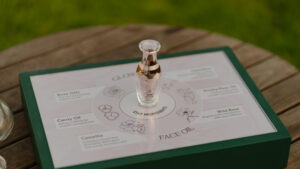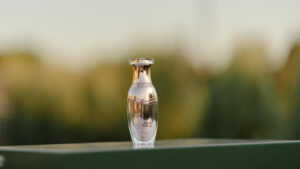
Which Skin Types Need the Glow Face Oil?
Face oils are often seen as “heavy” or “greasy,” but
FREE shipping to Greece & Cyprus on orders of €100 or more! Now, enjoy permanently reduced shipping in Greece – just €7! FREE shipping to Greece & Cyprus on orders of €100 or more! Now, enjoy permanently reduced shipping in Greece – just €7! FREE shipping to Greece & Cyprus on orders of €100 or more! Now, enjoy permanently reduced shipping in Greece – just €7! FREE shipping to Greece & Cyprus on orders of €100 or more! Now, enjoy permanently reduced shipping in Greece – just €7!
You might have noticed that on some days your skin appears duller and drier, while on others it’s oilier and more prone to acne. It’s common knowledge that periods can lead to pimples, but their impact on our skin is far more extensive. Our skin’s condition actually fluctuates in tandem with our menstrual cycle. Let’s delve into what occurs within our bodies and, consequently, to our skin throughout the cycle.
The menstrual cycle is segmented into four phases: the menstrual phase, which begins on the first day of your period (typically days 1-5), the follicular phase, where follicles mature and an egg forms (around days 6-13), ovulation, during which the mature egg is released from the ovary (around day 14), and the luteal phase, where the body gears up for potential pregnancy (days 15 to 28). If fertilization doesn’t occur, the egg is shed during menstruation, and a new cycle commences.
Our hormones, such as progesterone and estrogen, fluctuate throughout the menstrual cycle. These fluctuations drive the cycle and consequently impact our skin. Let’s explore the changes our skin undergoes at each stage to better care for it.
Note: It’s crucial to maintain a comprehensive skincare routine that includes cleansing and moisturizing both morning and evening throughout the cycle. However, we’ll advise on what to focus on during each phase given their unique effects on the skin.
Phase 1 – Menstruation: Low levels of estrogen and progesterone can make our skin feel duller and drier.
Tip: Your skin needs extra hydration during this phase. Don’t skip your moisturizer. Choose CP Miracle Cream for intensive daily hydration, The Skin Loving Suncream for hydration plus sun protection, or The Skin Adjusting Suncream for moisture, protection, and light coverage.
Phase 2 – Follicular Phase: As testosterone rises, the skin produces more natural oils and collagen, resulting in firmer, more radiant, and better-hydrated skin.
Tip: Continue your daily routine of cleansing and moisturizing, both morning and night.
Phase 3 – Ovulation: High estrogen levels can make our skin appear brighter, while increasing progesterone stimulates sebum production, making the skin oilier and more acne-prone.
Tip: Address the increased oiliness with thorough cleansing. We recommend double cleansing at night using The Pure Cleansing Oil to remove makeup and impurities, followed by The Toning Cleansing Gel for its antiseptic properties or The Calming Cleansing Gel to soothe the skin.
Phase 4 – Luteal Phase: The body ramps up progesterone production in preparation for potential pregnancy. This hormone surge can lead to more sebum, clogged pores, and bacterial growth, possibly causing acne until progesterone levels drop with the onset of menstruation.
Tip: Continue the double cleansing routine and consider adding The Regenerating Moisturizing Gel to help control oil production and unclog pores.
Remember, your mental health may also vary with your menstrual cycle. Treat yourself kindly, listen to your needs, and embrace the monthly changes as nature’s gift. And don’t let a pimple dampen your spirits!
With affection,
The CP Herbalist Team

Face oils are often seen as “heavy” or “greasy,” but

In the world of skincare, one of the most common

After summer, our skin often feels drier and looks duller.

Получайте ежемесячные новости, предложения и анонсы новой продукции!
© All Rights Reserved – CP Herbal Skin Care Products Ltd. | Designed and Developed by CYBEEM
